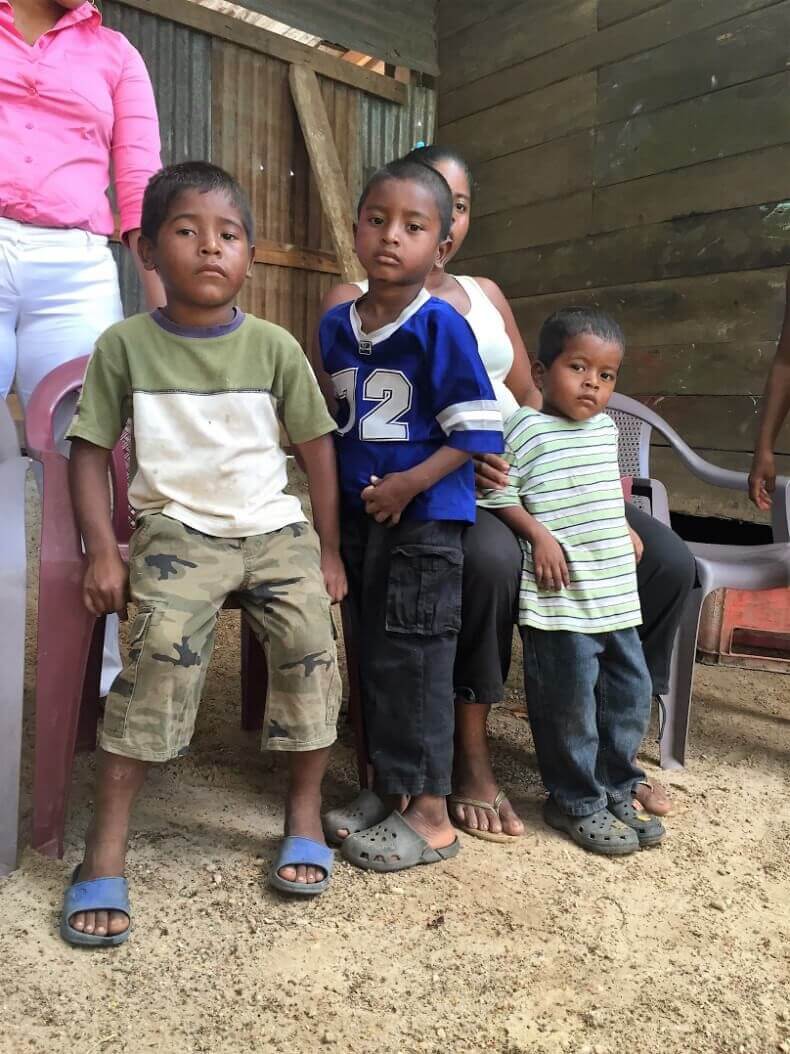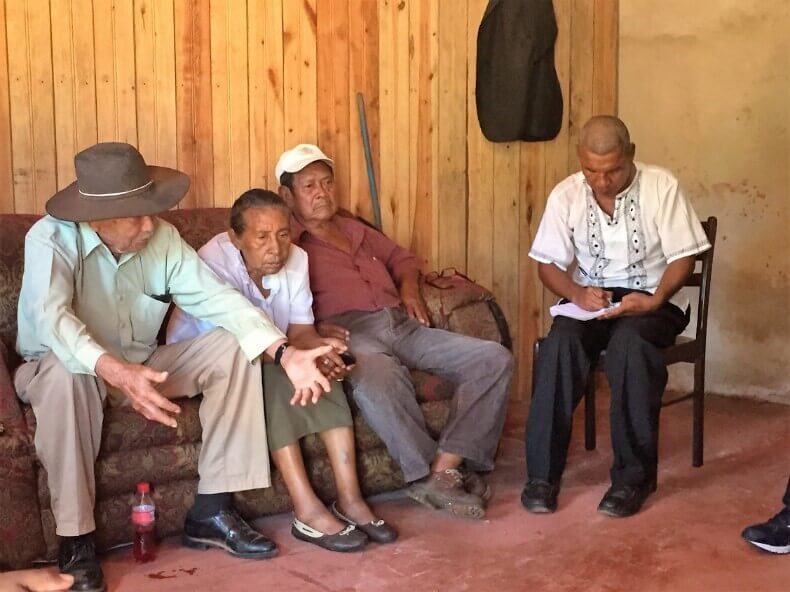
One day after she received an ominous warning, Indigenous Community Judge Celedonia Zalazar Point and her husband, Tito José González Bendles, were shot to death by Colonos in the northern Caribbean region of Nicaragua, a region that has been plagued by an escalating land conflict with illegal settlers since at least 2015. The unthinkable double homicide took place in the Tungla, Prinzu Awala Indigenous territory—Judge Celedonia Zalazar Point’s jurisdiction in the municipality of Prinzapolka.
La Prensa journalist, José Garth Medina, reported a statement from The Center for Justice and Human Rights of the Atlantic Coast (Cejudhcan) on Sept. 8, the date of the killings, concluding that the settlers entered the family home and killed both husband and wife with firearms.
Despite claims issued by local authorities regarding pending investigations into this most recent incident, Medina reminded readers that the November 2016 massacre (which IC also reported on) of a Mayanga family by Colono invaders, has yet to generate any arrests.
Colonos are armed, Mestizo imperialist settlers who are terrorizing Nicaragua’s Indigenous communities. Their endgame varies from one faction to the next; however most of them are interested in expanding the agricultural frontier with cattle farms or illegal mining interests—an effort that runs parallel to what has been happening across the Amazon for decades.
Many Colonos are also in possession of illegal land permits that grant them ownership to traditional Miskito lands.
In fact, the Indigenous territories of the northern Caribbean coast, where this recent double homicide took place, is also home to the largest tropical rainforest second only to the Amazon rainforest in the Western Hemisphere. The Bosawás Biosphere Reserve received official UNESCO designation as a biosphere reserve in 1997.
La Inicativa Mesoamericana de Mujeres Defensoras de Derechos Humanos (IM-Defensoras) has issued a call on the international human rights community “to remain vigilant about the grave situation facing the indigenous communities of the Caribbean Coast.” They called on Nicaraguan authorities to investigate the double homicide of the community judicial leader and her spouse; and in the process, end the culture of impunity that surrounds the ongoing murders of Indigenous Peoples in Nicaragua.
Even amidst the Guardian’s largely publicized partnership with Global Witness—a human rights watchdog group that has defended their methods, model, and investigation into the killings in Nicaragua after receiving waves of criticism from leftist groups operating ‘in solidarity’ with the Sandinista/Ortega government—the Guardian now appears unwilling to directly address the wave of deadly violence in Nicaragua, or even utter the country’s name in articles stemming from the partnership.
While the individual names of the judge and her spouse are listed at the top of their ‘recent killings list’, the Guardian‘s most recent published article, dated Oct. 11, makes no mention of the couple, let alone the cold-blooded colonialism that drove their murders.
To be sure, Community Judge Celedonia Zalazar Point and her husband, Tito José González Bendle, were killed by senseless colonial, greed-fueled violence in a country that has ironically managed to brand itself in many circles of international human rights discourse as a global leader of Indigenous rights recognition. Behind the scenes, the Indigenous Peoples of the northern Caribbean coast have been begging for years to FSLN/Sandinista authorities to end the culture of impunity that surrounds—and establishes a complicity in—this slow burning genocide.
Community leader, Brooklyn Rivera, has had his name smeared through the mud from every side but he’s still treated like a modern day mythic hero when he travels the frontier, which unlike the loud-mouthed Gringo ‘Sandal-istas’ who got caught up in the romance of a campesino revolution in the 1980’s—and have been unwilling to update their internal programming to recognize the economic and political ideological shifts that have taken place in the Sandinista model under Ortega—he travels to these violence-torn communities regularly. He is recognized everywhere he goes, every much the leader he was when Russell Means of the American Indian Movement (AIM) fought by his side during the last Indian wars.
The Moskito Council of Elders, led by Chief of the Elders, Ottis Lam Hoppington, are an entirely separate faction of tribal political influence in Moskitia and have no direct connections to Brooklyn Rivera or the various factions of the Indigenous political party of YATAMA that have emerged over the years. And yet, the message they send to the world is the same.
The colonial violence and invasion, which has greatly escalated since June of 2015 according to Hoppington, has disrupted their ancient way of life and connection to the land—and even disrupted the natural cycles of the region to the point of drying up rivers, causing animals to migrate, and causing the climate patterns to shift. The residents of Moskitia have been vigilant stewards of one of the most biodiverse areas in the world since ancient times; and, this is all being threatened – the Indigenous Peoples’ lives, and the climate mitigating biodiverse forest—by armed factions who, according to Hoppington, are directly supported by the Ortega government.

Chief of the Moskito Council of Elders, Otis Lam Hoppington, on the far left. Photo taken by Courtney Parker in February of 2016 in Bilwi, Nicaragua as the Elders met to discuss their list of demands from the YATAMA political party in a private meeting preceding the YATAMA conference in February of 2016.
In a statement collected from Brooklyn Rivera last year, he explains in great detail, the de-evolution of relations between the residents of Moskitia and the Sandinista government. This history ranges from a time of civil war when Indigenous villages were burned to the ground by the Marxist revolutionaries and tens of thousands of Indigenous individuals were internally displaced. Later, the Indigenous leaders of the region still gave Ortega and the FSLN another chance to make things right – for two election cycles – until it became apparent that the FSLN’s hollow apologies for their human rights violations on the Indigenous Peoples of Moskitia committed in the past were just empty rhetoric, hiding their real intentions to expand and nationalize the autonomous ancient Indigenous territory once and for all.
Accordingly, in the past few years, the region has been exercising more and more political autonomy which has resulted in a long line of violent attacks on Indigenous leadership in the quasi-urban Indigenous city of Bilwi – called Puerto Cabezas by colonists. This has occurred in tandem with the escalated violence and terrorism by Colonos inflicted on the frontier where Indigenous Peoples of Moskitia attempt to maintain their ancient lifestyles.
Many of the refugees fleeing to Bilwi from the frontier have never had to use money to acquire housing or food. A large percentage don’t even speak Spanish – only Miskito, the language which defines their lived experience on the frontier – and are marginalized further by this micro-cultural barrier when fleeing to Bilwi or other relatively urban regions.
Of course, the modern border to Honduras does not mean much to Indigenous Peoples of the region, as there have been Miskitos living, since ancient times, on either side of the dotted line. Yet, for whatever reason, masses have somehow been able to escape the encroaching settler violence on the Nicaragaua side, by crossing into modern-day Honduras, a part of the ancient ‘binational’ Indigenous territory of Moskitia.
This geopolitical anomaly (which has proven inconvenient for some ideologically entrenched ‘human rights groups’) seems to further disrupt the prevailing narrative that U.S. funded factions in Honduras have produced the deadliest violence towards all land defenders in Latin America. They certainly have produced an inexcusable amount of violence by any measure, but as the October 11th article in The Guardian noted on Honduras, their official body count of murdered land rights’ defenders for 2017 is ‘one’; and, is once again trailing behind Nicaragua’s death toll for the current year.

Indigenous Peoples are putting their bodies on the line and it's our responsibility to make sure you know why. That takes time, expertise and resources - and we're up against a constant tide of misinformation and distorted coverage. By supporting IC you're empowering the kind of journalism we need, at the moment we need it most.